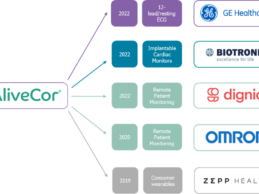Telemedicine has helped improve the quality of life of patients in every corner of the world and has been successfully utilized to provide convenient care to people with limited or no access to health services. Today, worldwide digital interconnectivity is growing, enabling telehealth to advance health equity, bring access to care for underserved regions and meet the urgent, primary and behavioral healthcare needs of an exploding global population.
It has been a remarkable journey for the
Read More
RTLS Can Enhance the Patient Experience, Staff Safety, and Workflow Operations in 2023
Although the healthcare industry has shown significant resilience, the byproduct of the pandemic has amplified staff stressors across all operational and clinical roles. In a study conducted in 2022, more than one-third (34%) of the participating registered nurses (RN) stated that it was likely they would leave bedside nursing by the end of the year. Almost half (44%) cited both burnout and high-stress environments as their main reasons to retire or pursue other careers.
As staff
Read More
How Healthcare Organizations Can Enhance Patient Experience & Trust During the Winter Surge
It’s well known that the winter season typically creates spikes in illness and, consequently, a surge in healthcare visits. What might not be so obvious is that this time of increased demand is also the ideal opportunity for healthcare organizations to prioritize building trust and improving experiences for patients, clinicians and team members.
Just as science grows more sophisticated each year, allowing practitioners to better treat a greater number of medical ailments, so should
Read More
The Quickening Pulse of the Ambulatory Diagnostic Cardiology Market
The Global Ambulatory Diagnostic Cardiology Market is evolving at a rapid pace, driven by technological developments, and shifting models of healthcare service delivery and funding. The overall market will grow from $2.5 billion in 2021, to $3.3 billion by 2026, with Long-Term ECG and, to a lesser extent, Mobile Cardiac Telemetry (MCT), being the principal engines of growth. Unsurprisingly, these two markets are garnering serious attention from large incumbent vendors in the more established
Read More
CMS Program Integrity’s Role in Combatting FWA While Maintaining Health Equity
In 2022, the Center for Medicare and Medicaid Services (CMS) established health equity as a pillar of its future work. Program integrity staff from every state Medicaid program, and federal program staff working on Medicare, must consider the roles of both program integrity and analytics when combatting fraud, waste, and abuse (FWA)in the healthcare system.
CMS defines health equity as "the attainment of the highest level of health for all people, where everyone has a fair and just
Read More
Think Retail: What the Medical Supply Industry Can Learn from the Marketplace Revolution
Through years of disruption and advancement, the retail industry has evolved tremendously to meet the increased demands of a broadening consumer base. However not every industry – and most notably healthcare — has progressed with the times and buyers’ needs.
The healthcare supply chain specifically must expand beyond its antiquated roots to better serve buyers. Just as in retail, where the U.S. has seen exponential growth over the last 20 years, according to the U.S. Census Bureau, the
Read More
Top Security Certifications Required for Data Protection
How secure is your data? If your organization does not have the right security certifications in place, it’s not a matter of if a data breach will occur – but when. A lack of regulatory compliance, network and technical vulnerabilities, unencrypted information, unsecured mobile devices, and weak credentials all play a part in putting a healthcare organization at risk for a data breach.
Today, the cost of a data breach comes with a hefty price tag – an average of $9.44 million in the
Read More
Why It’s Time for Intelligent Prior Authorization
The Centers for Medicare & Medicaid Services (CMS) recently proposed a new rule to advance interoperability and improve the prior authorization (PA) process for Medicare and Medicaid patients. Specifically, the rule stipulates that health plans adopt electronic prior authorization processes, adhere to shorter turnaround times, clearly communicate denial reasons, publish key metrics annually, and implement the Fast Healthcare Interoperability Resources (FHIR) Application Programming Interface
Read More
FHIR Adoption and Implementation Challenges
The Fast Healthcare Interoperability Resources (FHIR) standard was introduced by HL7 in 2014 as a significant replacement for the HL7 V2 and V3 standards. An open standard called FHIR, which was initially drafted in 2011 makes it easier than ever for legacy systems and new apps to exchange data. FHIR was created to not only increase communication efficiency and interoperability compared to earlier standards but also to facilitate implementation by giving clear specifications and allowing
Read More
Why Researchers Should Explore New Apps of Machine Learning
As the amount of real-world data (RWD) in the pharmaceutical industry continues to grow, so does the usage of machine learning (ML) to analyze that data and gain insights. In fact, in a recent survey, 95% of life sciences executives said they expect to utilize ML in the next few years to generate real-world evidence (RWE) from this data.
With such a large and growing volume of data available, researchers may be wondering how they can take advantage of all of it to enhance and expand the
Read More










